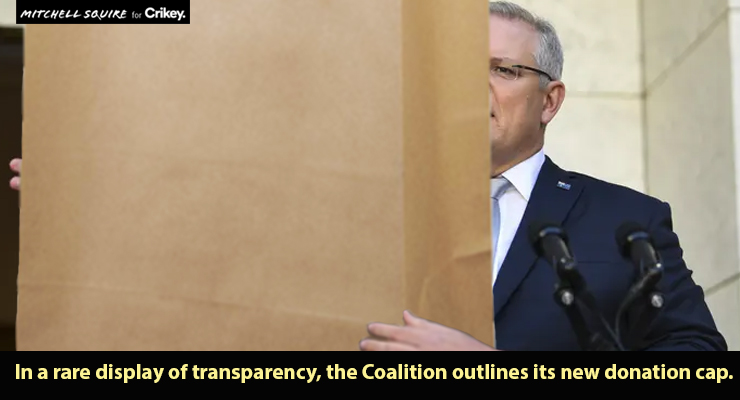
Political fundraising has been crunched by the pandemic, with the major parties’ incomes from donations, contributions and investment returns slumping to less than half previous levels.
Data for the 2019-20 financial year released today by the Electoral Commission shows big falls in fundraising as the economy entered recession, companies hunkered down and lockdowns ended traditional fundraisers.
Contributions would have fallen anyway, given 2019-20 was an off-year for elections, with no federal or major state election during the year, but Labor’s branches collectively raised just $50 million compared to over $120 million in 2018-19; the Coalition’s various branches together managed just $70 million compared to over $180 million the year before.
Preparing for the Queensland state election in October last year, both Queensland Labor and the Liberal National Party actually raised less funding in 2019-20 than the year before
NSW Labor recorded the highest income, with $13.9 million, bolstered by 2019 state election public funding (which also boosted the NSW Liberals’ income) and extensive donations from major unions. The Victorian Liberals were the biggest conservative branch courtesy of a $4 million contribution from its funding arm Vapold and $3 million in public funding, along with a monster $200,000 donation from Liberal backer Anthony Pratt, who pumped $1.55 million into the Coalition through the year.
Federal Labor managed just $9.4 million, including over $750,000 from its funding vehicle John Curtin House, while the federal Liberals managed just over $13 million, with a lot of help from Pratt, fossil fuel companies and the banks.
A large proportion of both sides’ federal fundraising came in the form of annual subscriptions — often costing $25,000, which after GST becomes an “Other Receipt” of $27,500 — which give the donor the opportunity to attend a number of events during the year behind closed doors with frontbenchers in order to argue for policies they would benefit from or, as some put it, “engage in the policymaking process”.
While parties are required to report such contributions if they are over the reporting threshold of $14,000, a number of corporate donors take advantage of the lax reporting rules to not bother reporting them.
Fundraising has likely improved little over the first half of 2020-21 either; for all the speculation about an early election late in the year, neither side has a massive war chest at this point and will be relying on traditional stalwarts of funding — in Labor’s case, unions; in the Liberals’ case, mega-donors like Pratt — to get them into the game.








Does anyone ever ask what all this money is for? Political Parties already receive public funding from the taxpayer under the Electoral Act. On top of this, the pile of donations from private and mostly secret sources goes straight to the big advertising corporations and feeds disinformation and propaganda. There is a better way.
There’s one donor whose contributions aren’t down – Rupert’s donations of positive PR to Scotty FM and his Limited News Party.
How much would equivalent in-kind contributions fetch on the advertising market (where the parties are spending a large wedge of that sponsorship deal money from other sponsors)?
Apparently peter Costello’s efforts are working to support lnp now too.
It certainly looks like Pratt, the second richest billionaire in the country,got a good return for his donations as he was given near $20 million back from the fire Relief funds even if you were not affected. I am sure the people of Cobargo will be happy to continue to wait as they try to raise enough money to donate to the Coalition Government if they could be guaranteed such a good return
I thought Pratt was a mate of Bill Shorten and the ALP – might be time for him to be reminded that his employees make the profits for him
Intrigued by the $941K donation from the Queensland Legislative Assembly to the ALP. Seems odd!